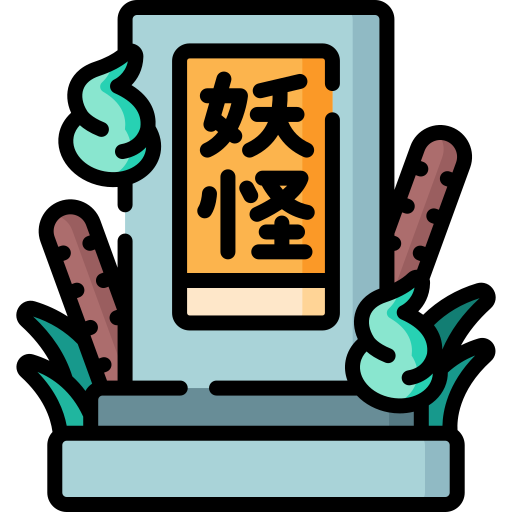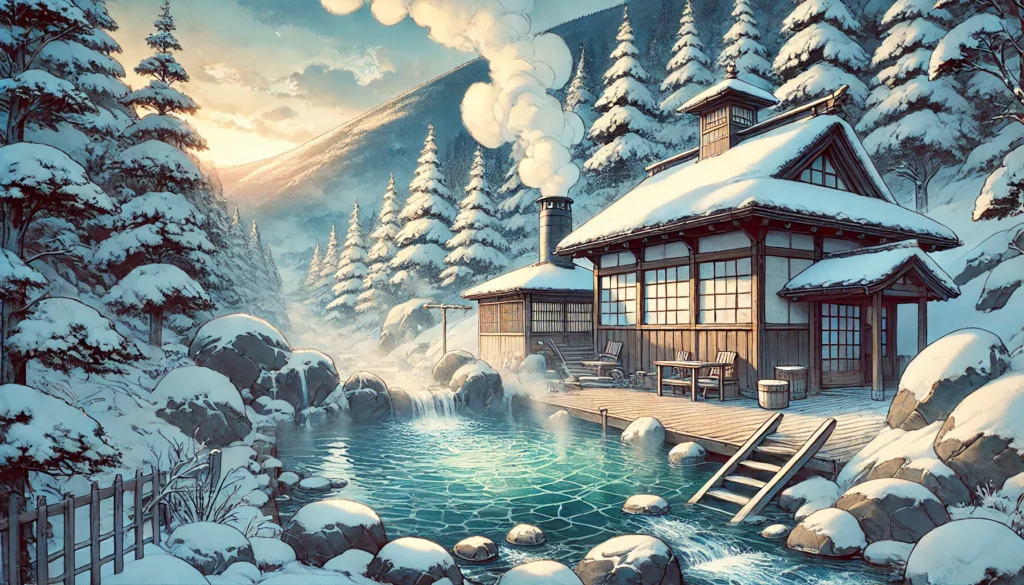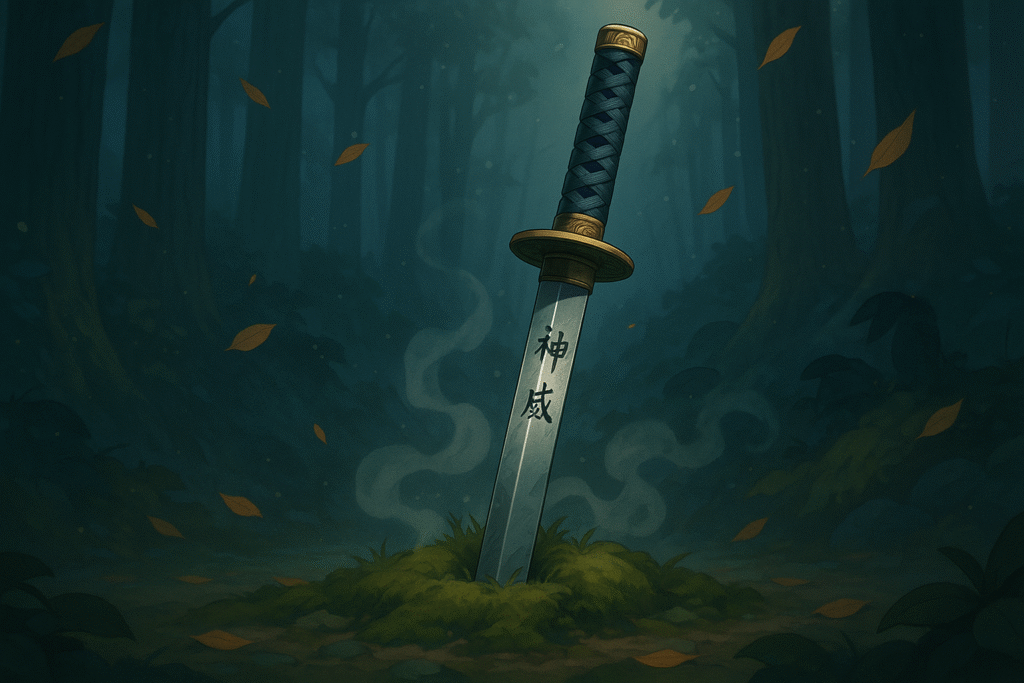Have you ever dreamed of sinking into a steaming outdoor bath surrounded by snow-capped mountains, with nothing but the sounds of nature and the warmth of mineral-rich waters embracing your body? The best Japanese hot springs offer precisely this transcendent experience, transforming a simple bath into a profound ritual that has captivated locals and travelers for centuries.
Japan’s volcanic landscape has blessed the country with thousands of natural hot springs, known as onsen, each with unique mineral compositions and breathtaking settings. These therapeutic waters have been the cornerstone of Japanese wellness culture for over a millennium, offering not just physical healing but a spiritual connection to nature that’s increasingly rare in our modern world.
In this comprehensive guide, we’ll explore the most remarkable hot springs across Japan, from remote mountain havens to seaside retreats, helping you plan your own rejuvenating journey through the country’s thermal wonders.
Want to explore Japan’s culture?
Discover Japan’s rich culture, traditions, and hidden gems with our expertly crafted guides. Get insider tips on travel, food, and history. All for free!
What Makes the Best Japanese Hot Springs Special?
Before diving into specific destinations, it’s worth understanding what sets the best Japanese onsen apart from ordinary bathing experiences. Unlike regular baths or even the communal bathhouses (sento) found throughout Japan, true onsen use naturally heated spring water rich in minerals like sulfur, calcium, and magnesium.
The Japanese government officially defines onsen as waters that emerge from the ground at a temperature of at least 25°C (77°F) and contain at least one of 19 designated mineral components. However, most of the best Japanese hot springs far exceed these minimum requirements, with temperatures commonly ranging from 40°C to 44°C (104°F to 111°F) and mineral concentrations potent enough to color the water milky blue, rusty red, or even pitch black.
What truly elevates the finest onsen experiences, though, is their integration with stunning natural settings and traditional Japanese hospitality. The best Japanese onsen ryokan (hot spring inns) seamlessly blend indoor comfort with outdoor bathing, allowing guests to experience what the Japanese call “shinrin-yoku” (forest bathing) while literally bathing in thermal waters.
Top 5 Famous Japanese Onsen Towns
1. Kusatsu Onsen, Gunma Prefecture
Perched high in the mountains of Gunma Prefecture, Kusatsu consistently ranks among the best Japanese hot springs in national surveys. What makes this famous onsen town extraordinary is its abundant water supply—an astounding 4,000 liters per minute—and the distinctive “yumomi” method.
The sulfuric waters of Kusatsu emerge from the ground at scalding temperatures that would be unbearable for bathing. Rather than diluting them with cold water (which would reduce their therapeutic properties), locals perform the yumomi ritual, using large wooden paddles to cool the water through agitation while maintaining its mineral potency.
At the heart of town sits Yubatake (“hot water field”), where steaming water cascades down wooden chutes before being channeled to various bathhouses. Don’t miss Sai no Kawara outdoor bath, where you can soak while gazing at the forested mountains that surround this picturesque town.
Getting there: Take the JR Hokuriku Shinkansen from Tokyo to Karuizawa (about 1 hour), then catch a direct bus to Kusatsu Onsen (approx. 80 minutes).
2. Beppu Onsen, Oita Prefecture
Often called Japan’s “hot spring capital,” Beppu hosts the largest volume of thermal water in the country after Kusatsu. What earns Beppu its place among the best Japanese hot springs is its incredible diversity—this coastal city on Kyushu Island features eight major hot spring areas collectively known as the “Beppu Hatto.”
Beyond conventional hot water baths, Beppu offers unique experiences like sand baths (where you’re buried in naturally heated sand), mud baths rich in skin-nourishing minerals, and steam baths that create a sauna-like experience. For the adventurous, there’s even the opportunity to try “jigoku-mushi,” a cooking method using the natural steam vents to prepare eggs, vegetables, and seafood.
While visiting, take the “Jigoku Meguri” (Hell Tour) to see spectacular thermal pools like the cobalt-blue Umi Jigoku (Sea Hell) and blood-red Chinoike Jigoku (Blood Pond Hell)—these are too hot for bathing but offer stunning photo opportunities.
Getting there: Fly from Tokyo’s Haneda Airport to Oita Airport (1 hour 40 minutes), then take a 40-minute bus to Beppu, or take the shinkansen from Tokyo to Kokura, transferring to the Sonic limited express to Beppu (total journey about 5 hours).

3. Kinosaki Onsen, Hyogo Prefecture
For travelers seeking an authentic yet accessible onsen town experience, Kinosaki stands out among the best Japanese onsen towns. This charming destination along the Sea of Japan coast has preserved its traditional character while making visitors feel welcome, with comprehensive English signage and tattoo-friendly policies at its seven public bathhouses.
What makes Kinosaki special is the preservation of the traditional onsen-hopping experience. Guests staying at any local ryokan receive a pass to visit all seven public baths, and the enchanting sight of visitors strolling between bathhouses in yukata (light cotton kimono) and wooden geta sandals creates an atmosphere straight from a period film.
The town is particularly magical in winter when snow blankets the willow-lined canal and stone bridges, creating a stark contrast with the steaming waters. For many travelers, Kinosaki represents the perfect balance of authenticity and accessibility among the best Japanese hot springs.
Getting there: Take the Limited Express Kinosaki from Kyoto or Osaka (approximately 2.5 hours).
4. Hakone Onsen, Kanagawa Prefecture
For Tokyo residents and visitors with limited time, Hakone offers the most accessible entry point into Japan’s hot spring culture. Despite its proximity to the capital (just 90 minutes by train), this mountainous resort area delivers authentic experiences that earn it recognition among the best Japanese hot springs.
What distinguishes Hakone is its versatility. The area features everything from luxury ryokan with private in-room baths overlooking Lake Ashi to Yunessun, a family-friendly “onsen theme park” where visitors can soak in unconventional baths filled with coffee, wine, or green tea (while wearing swimsuits, unlike traditional nude bathing areas).
Beyond bathing, Hakone offers spectacular views of Mount Fuji (weather permitting), world-class art museums, and a scenic loop transportation route featuring cable cars, a ropeway, and a nostalgic pirate ship cruise across Lake Ashi.
Getting there: Take the Odakyu Railway’s “Romance Car” limited express from Shinjuku Station in Tokyo to Hakone-Yumoto Station (90 minutes).
5. Kurokawa Onsen, Kumamoto Prefecture
Nestled in a forested river valley in Kyushu’s mountainous interior, Kurokawa represents the idyllic vision of what the best Japanese onsen towns should be—tranquil, preserved, and harmonious with nature. Unlike more developed hot spring destinations, Kurokawa has maintained strict building codes that prohibit concrete structures and neon signs, resulting in a remarkably cohesive aesthetic of wooden ryokan with cypress baths.
The town’s unique “nyuto tegata” system allows visitors to purchase a wooden pass (¥1,500) that grants access to three outdoor baths of their choosing from among two dozen participating establishments. This tradition encourages exploration of the town’s various therapeutic waters while controlling tourist numbers.
Many ryokan in Kurokawa feature exceptional rotenburo (outdoor baths) built directly alongside the rushing river, creating an immersive nature experience that exemplifies the highest ideals of Japanese bathing culture.
Getting there: Take a bus from Fukuoka Airport to Kurokawa Onsen (approximately 2.5 hours).
Best Japanese Onsen Ryokan Experiences
While public bathhouses offer wonderful entry points into hot spring culture, staying at a ryokan (traditional inn) with its own onsen delivers the most comprehensive experience. Here are some exceptional properties that showcase the pinnacle of Japanese hospitality combined with remarkable thermal waters:
Hoshinoya Karuizawa (Nagano Prefecture)
This modern luxury resort reimagines the traditional ryokan concept while leveraging the therapeutic hot springs of Karuizawa. The property’s minimalist architecture incorporates natural materials and panoramic windows that frame the mountainous landscape, while its meditative bathing pavilions offer both communal and private bathing experiences.
What makes Hoshinoya special is its commitment to environmental sustainability—the resort utilizes geothermal energy from the same sources that feed its baths, creating a thoughtful harmony between luxury and ecological responsibility.
Nishimuraya Honkan (Kinosaki, Hyogo Prefecture)
As the premier ryokan in Kinosaki Onsen, this 150-year-old establishment represents the gold standard of traditional hospitality. Beyond access to the town’s seven public baths, guests enjoy the property’s exquisite private garden bath surrounded by seasonal foliage.
The ryokan’s kaiseki-style multicourse dinners feature local specialties like Tajima beef and fresh seafood from the nearby Sea of Japan, demonstrating how the best Japanese onsen experiences extend well beyond the bathwater.
Lamp no Yado (Noto Peninsula, Ishikawa Prefecture)
For those seeking true escape, this remote ryokan perched on the rugged Noto Peninsula offers an unparalleled connection to the sea. Its dramatic rotenburo are carved into oceanside cliffs, allowing bathers to gaze across the infinite Japan Sea horizon while wave spray occasionally mingles with the thermal waters.
With just nine rooms and no televisions, this destination epitomizes the concept of “digital detox” while delivering one of the most memorable bathing experiences in Japan.
Love Japan? Stay in the Loop!
Get the best of Japan straight to your inbox: language, culture & travel insights!
Seasonal Considerations for Visiting the Best Japanese Hot Springs
While onsen can be enjoyed year-round, each season offers distinctive pleasures:
- Winter (December-February): The quintessential onsen experience—soaking in steaming waters while surrounded by snow—is most accessible in regions like Nagano, Niigata, and Tohoku. The contrast between freezing air and hot water creates an exhilarating sensation the Japanese call “yukimi-buro” (snow-viewing bath).
- Spring (March-May): Many hot spring resorts feature cherry trees, creating magical scenes of pink blossoms floating onto the surface of outdoor baths. This season also brings pleasant hiking weather in many onsen regions.
- Summer (June-August): Mountain onsen destinations provide refreshing escapes from urban heat and humidity. Consider dawn or evening baths to avoid the midday warmth.
- Autumn (September-November): The fiery colors of Japanese maples create spectacular backdrops for outdoor bathing, particularly in mountainous onsen towns like Nyuto Onsen in Akita Prefecture.
If you’re planning a spring visit to experience the magical combination of cherry blossoms and hot springs, don’t miss our guide to Cherry Blossoms at Mount Yoshino, which pairs perfectly with a visit to nearby hot spring destinations in the Kansai region.
Etiquette Tips for Enjoying the Best Japanese Hot Springs
Even the most experienced travelers can feel apprehensive about onsen etiquette. Here are essential guidelines for a comfortable experience:
- Thorough washing is mandatory before entering the bath. Use the shower stations or washing areas to cleanse your body completely.
- Small towels are for modesty and washing, not for immersion in the bath water. You can place your towel on your head while bathing or leave it aside on a rock.
- Tattoos may be problematic at some establishments due to historical associations with organized crime. However, many places—especially in tourist areas—have become more accepting. When in doubt, seek out “tattoo-friendly” onsen or book a private bath.
- Keep voices low and avoid splashing to maintain the tranquil atmosphere.
- Stay hydrated before and after bathing, as the hot water can cause dehydration.
For more detailed advice on navigating Japan’s distinct cultural norms, download our comprehensive Japanese etiquette guide from our resources page.

Beyond Bathing: Complementary Activities in Onsen Regions
The best Japanese hot springs often lie in regions rich with other attractions. Consider these complementary activities:
- Hakone: Combine onsen bathing with art appreciation at the Hakone Open-Air Museum or traditional crafts like yosegi marquetry woodwork.
- Kusatsu: The nearby Kusatsu Ski Resort offers winter sports opportunities, while summer brings highland hiking trails with alpine wildflowers.
- Beppu: Explore the Kunisaki Peninsula’s ancient Buddhist sites or sample the region’s renowned citrus fruits and seafood.
- Kinosaki: Time your visit for winter crab season, when the local snow crab (matsuba-gani) appears in spectacular kaiseki dinners.
For culinary enthusiasts looking to enhance their hot spring journey, our guide to Where to Find the Most Famous Japanese Ramen Bowls offers recommendations that can be incorporated into your onsen itinerary.
Frequently Asked Questions About the Best Japanese Hot Springs
What are the most famous Japanese onsen?
The most famous Japanese onsen include Kusatsu in Gunma Prefecture, Beppu in Oita Prefecture, and Hakone in Kanagawa Prefecture, each renowned for their abundant, mineral-rich waters and distinctive bathing experiences.
When is the best time to visit Japanese hot springs?
Winter (December to February) is the best time to visit Japanese hot springs for the traditional experience of bathing outdoors surrounded by snow, though autumn offers spectacular foliage views and spring combines cherry blossoms with comfortable temperatures.
Are tattoos allowed in Japanese onsen?
Many traditional Japanese onsen prohibit tattoos due to historical associations with organized crime, but an increasing number of establishments, particularly in tourist areas, now welcome tattooed visitors or offer private bath options.
What are the health benefits of Japanese hot springs?
Japanese hot springs offer health benefits including improved circulation, relief from muscle and joint pain, stress reduction, and skin improvements through mineral absorption, with specific therapeutic properties varying based on each spring’s unique mineral composition.
What should I bring to a Japanese onsen?
When visiting a Japanese onsen, bring only basic toiletries (many ryokan provide these), a small towel for washing and modesty, and any necessary medications, as most essentials are provided and minimal belongings are brought into the bathing areas themselves.
The best Japanese hot springs offer more than just a place to bathe—they provide a window into Japan’s soul, where the elements of nature, tradition, and mindfulness converge in steaming pools of mineral-rich water. Whether you seek healing for physical ailments or simply a moment of tranquility in our hyperconnected world, these ancient waters continue to offer timeless respite.
Have you visited any of these remarkable hot springs? Share your experiences in the comments below, or let us know which onsen destinations are on your travel wish list!
Join Fellow Japan Enthousiasts!
Ask questions, get study tips, and take part in weekly challenges. Join a community of motivated learners exploring both the language and culture of Japan!




